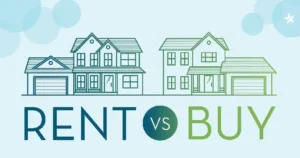Are you looking to reduce your mortgage payment but think you can’t refinance with bad credit? Refinancing might still be within reach, even if your credit score isn’t ideal.
With the right strategies and loan options, you can lower your monthly payments, reduce your interest rate, or even access your home equity.
This guide explores refinancing options for people with less-than-perfect credit and provides actionable steps to improve your chances of approval.
1. Contact Your Current Mortgage Company
Your current lender is often the best place to start. They already know your payment history and may offer refinancing options tailored to existing customers, such as streamlined or rate-and-term refinances.
Benefits of Working with Your Current Lender:
- Familiarity with your account history
- Potential for fewer documentation requirements
- Streamlined refinancing options
2. Look into a Mortgage Recast
A mortgage recast involves making a large payment toward your loan’s principal, and the lender recalculates your payment based on the new balance. Unlike refinancing, a recast doesn’t require a credit check, making it ideal for borrowers with bad credit.
Advantages of a Mortgage Recast:
- No credit check or income verification required
- Lower monthly payments without changing your loan terms
- Retains your existing interest rate
3. FHA Streamline Refinance
If you have an FHA loan, the FHA Streamline Refinance program allows you to lower your interest rate and monthly payment without extensive documentation. Credit checks and home appraisals are often not required.
FHA Streamline Refinance Requirements:
| Requirement | Details |
|---|---|
| Credit Check | Not required |
| Appraisal | Not required |
| Mortgage Payment History | No late payments in past 6 months |
| Ownership Duration | Must own home for at least 6 months |
This program is especially beneficial for borrowers with bad credit as it simplifies the refinancing process.
4. VA Interest Rate Reduction Refinance Loan (IRRRL)
If you have a VA loan, the VA IRRRL is another streamlined refinance option. This program eliminates the need for appraisals and income verification while offering lower interest rates.
Key Benefits of VA IRRRL:
- No appraisal required
- No income verification
- Potential for no out-of-pocket costs if fees are rolled into the loan
5. Home Equity and HELOC Loans
Home equity loans and HELOCs allow you to access your home equity for expenses like renovations or debt consolidation. While these loans can be harder to qualify for with bad credit, they remain viable options for some borrowers.
Pros and Cons of Home Equity Loans:
| Pros | Cons |
|---|---|
| Lower interest rates | Reduces home equity |
| Flexible repayment options | Closing costs of 2%-5% |
| Potential tax benefits | Risk of foreclosure if payments are missed |
6. Cash-Out Refinance
A cash-out refinance replaces your existing mortgage with a new one while allowing you to borrow additional funds against your home’s equity. This option can be easier to qualify for compared to home equity loans, even with bad credit.
Cash-Out Refinance Requirements:
| Requirement | Details |
|---|---|
| Credit Score | Minimum 620 |
| Equity in Home | At least 30% |
| Debt-to-Income Ratio | 50% or lower |
| Late Payments | None in past 12 months |
7. Check Your Local Credit Union
Credit unions are often more flexible than traditional banks or online lenders. If you have a strong relationship with your credit union, they may overlook a poor credit score and focus on your history with them.
Why Consider Credit Unions?
- Personalized service tailored to members
- Competitive rates compared to larger institutions
- Willingness to work with borrowers facing financial challenges
8. Improve Your Credit Score
Even small improvements to your credit score can significantly impact your refinancing options and terms. Start by reviewing your credit report for errors and addressing high-impact factors like payment history and credit utilization.
Quick Credit Improvement Tips:
- Pay down credit card balances to reduce utilization below 30%.
- Dispute inaccuracies on your credit report.
- Avoid opening new credit accounts.
- Set up automatic payments to avoid late payments.
9. Make the Rest of Your Application Attractive
Your credit score is just one part of your application. Strengthening other areas can help offset poor credit and make you a more appealing candidate for refinancing.
Compensating Factors:
- Low debt-to-income ratio
- Significant cash reserves
- Stable, long-term employment
- Large amount of equity in your home
10. Remove a Co-Signer
If your mortgage includes a co-signer with poor credit, removing them could improve your chances of approval. Lenders use the lowest credit score among borrowers to determine rates and terms, so eliminating a co-signer with bad credit can make a big difference.
Why Are You Refinancing?
Your reason for refinancing determines which loan type is best for you. Whether you’re looking to lower payments, access cash, or pay off your mortgage faster, it’s essential to match your goals with the right loan product.
Common Reasons for Refinancing:
- Lower monthly payments
- Reduce interest rates
- Access cash for home improvements
- Switch from an adjustable-rate to a fixed-rate mortgage
How to Qualify
To qualify for refinancing, you’ll need to meet specific criteria, including:
- Staying current on your mortgage with no more than one late payment in the past 12 months
- Providing documentation such as income statements, tax returns, and bank statements
- Meeting minimum credit score and equity requirements
Finding Refinance Lenders that Work with Poor Credit
Shopping around for lenders who specialize in bad credit refinancing is crucial. Compare offers from multiple lenders to ensure you get the best terms.
Tips for Finding Lenders:
- Focus on lenders that advertise low credit score requirements.
- Use mortgage comparison tools to evaluate rates.
- Limit your shopping period to 30 days to minimize credit inquiries.
The Bottom Line
Refinancing with bad credit is possible, but it requires research, preparation, and persistence. Whether you’re pursuing an FHA streamline refinance, VA IRRRL, or cash-out option, understanding your options and improving your credit can save money and make refinancing more accessible. If your application is denied, don’t lose hope—shop around and explore alternative lenders. With the right strategy, you can achieve your financial goals through refinancing.
Frequently Asked Questions
Can I refinance with a credit score below 620?
Yes, some options, like FHA Streamline Refinances or VA IRRRLs, don’t require a credit check.
What’s the best refinance option for bad credit?
FHA Streamline and cash-out refinancing are popular for borrowers with poor credit.
Does refinancing affect my credit score?
Yes, refinancing involves a credit check, which may slightly lower your score temporarily.
Can I refinance if I have late payments?
You must have no late payments in the past 12 months for most refinancing options.
How much equity do I need to refinance?
Most lenders require at least 20% equity for cash-out refinancing.
Will refinancing save me money?
If you secure a lower interest rate, refinancing can significantly reduce monthly payments.
Can I switch lenders for refinancing?
Yes, you can refinance with any lender offering better terms.
What documents are needed for refinancing?
Prepare income statements, tax returns, credit reports, and bank statements.















